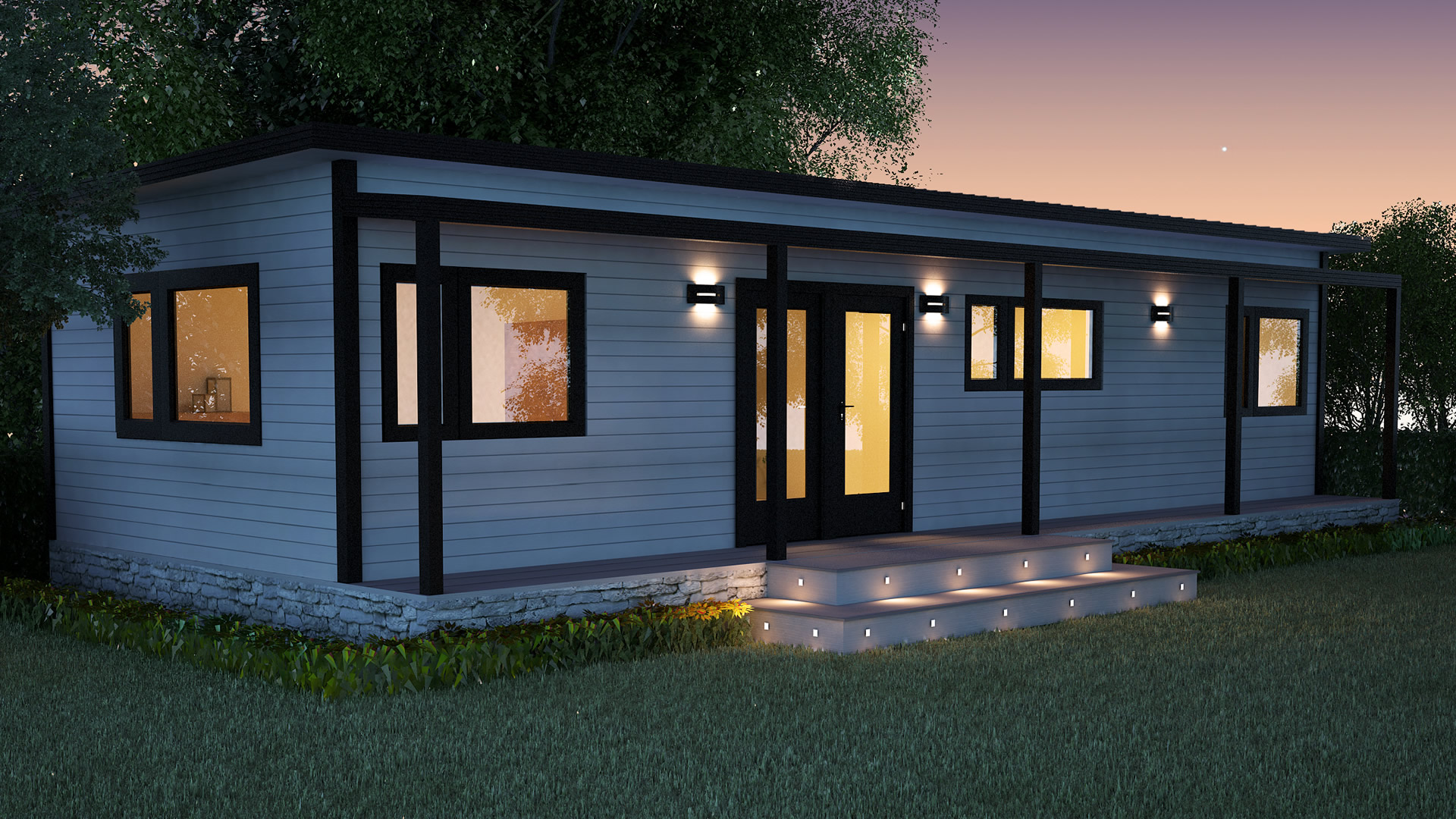Condensation is a common problem now that homes are getting more airtight. 50 years ago, with old wooden windows and gaps under the front door, there was a lot of accidental ventilation from draughts. But now, with rubber seals everywhere, there is not.
Living generates a huge amount of moisture – breathe on a pane of glass and you will see the condensation in one breath! We breathe out something like 1-2 litres of water a night when we sleep. Then there is cooking, showers, etc. And household furniture and carpets can store a surprising amount of condensation, for example a bed can store up to 10 litres of moisture!
And too much moisture causes multiple problems, from condensation on the windows, to causing black mould, to making the home far harder to heat which will cost you money every day in winter.

Some building systems promote breathable walls, but this will never be enough by itself to control moisture and it can easily go badly wrong – unless this is very carefully designed and carefully built to specification, this can lead to moisture condensation inside the walls, which is terrible for insulation and causes rotting. Other building systems use vapour barriers, either in the wall linings, or in the insulation itself, i.e. with polystyrene insulation. Either way, if you have a modern home with no accidental draughts, condensation needs to be actively managed.
So pretty much all new homes and tiny homes should actively think about and manage condensation. A good goal is to replace all of the air in the home at least 2-3 times per day.
There are a variety of approaches. I’ll list some, starting at the easiest (but often the least effective) and working up:
- Install a shower dome over the shower – this makes the condensation from the shower stay in the shower and re-condensate there where it should. It also makes it warmer. This is reasonably cheap (about $300) and very effective, but not a complete solution by itself.
- Leave two windows open a crack – they should be at opposite ends of the home to let wind create a flow. Think about the flow – it should cover the whole home – if it is just opposite sides of one room, it will mostly only help that one room. The more open windows the better, but it will still struggle to give 2-3 air changes per day, especially when there is not much wind. Opening one window a crack will not help much, as there is no chance for flow of fresh air in, because the is no place for the air to flow out elsewhere. Or vice versa depending on the wind direction.
- Leave the bathroom and/or kitchen extractor on while you are away for the day. But think about where the fresh air is coming in to replace the extracted air, e.g. leave a window open a crack at the opposite end. If the rest of the home is sealed, the fan will struggle to push out anything. Remember that a bathroom and/or kitchen extractor that is turned off can be a inlet of fresh air IF it does not have a vent flap preventing this. This can be pretty effective, but requires you to remember to do it daily and this type of fan may not be as power efficient as a dedicated fan, and may not be designed to run for long periods, so it may fail earlier.
- Use a dehumidifier, or put the aircon on to dehumidify mode while your away. This is ok in summer, as aircons in cooling mode will be dehumidifying as a byproduct of cooling. But this is not an ideal solution in winter, as all dehumidifiers work by cooling down the air (that is what makes the moisture condensate). These solutions are also more costly to run, dehumidifiers require you to manually empty the water out, and you don’t get the benefits of fresh, oxygenated air.
- Install one or more ventilation fans. At its simplest, it is a quiet fan (so can stay on while you sleep) combined with a vent at the opposite end of the home, to get air flow through the home. You can either install an ultra-quiet fan (more expensive) anywhere, or install a reasonably quiet fan (i.e. quieter than a typical bathroom extractor) in a place further away from where people sleep, or ideally mount it outside – under the floor. If you go for just one fan, make sure you have an unblocked air flow through the whole home when doors are closed – you might need to install small vents through walls, or ideally make sure there is a small (~5mm) gap under any doors that are closed, or leave doors slightly open. Also, make sure the fan/s are big enough to achieve 2-3 air changes per day – they will have a stated air flow per minute etc, BUT this is based on not having to push against any air pressure (i.e. no restrictions to air flow at all, i.e. wide open doors and windows), so in reality, you need to divide the stated air flow by about 4 to get the real air flow. Most people get an expert to do this (like Moisture Master), but some can try it more themselves. Could easily cost $1000.
- Install a heat exchange ventilation system. This is like the previous option except the outgoing air goes through a heat exchanger which captures the warmth from the outgoing air and uses it to heat up the incoming air, which saves on power bills and stops cold drafts from the incoming air vent. This could easily cost $2500 to $5000.
Whichever option you choose, it is important to think about condensation in your home, choose an option, and monitor the changes – learn and adapt. But do bear in mind what I said earlier about furniture and carpets storing moisture – you can often find that you see an improvement for a few weeks, then it seems like the condensation is worse than ever – this is probably not actually the case – this is probably the moisture levels in the air getting low enough that the water in the furniture and carpets is starting to evaporate into the air, which is actually a good thing – after a few more weeks, you home will be fully dried out, feel noticeably better and also be much easier to heat.
